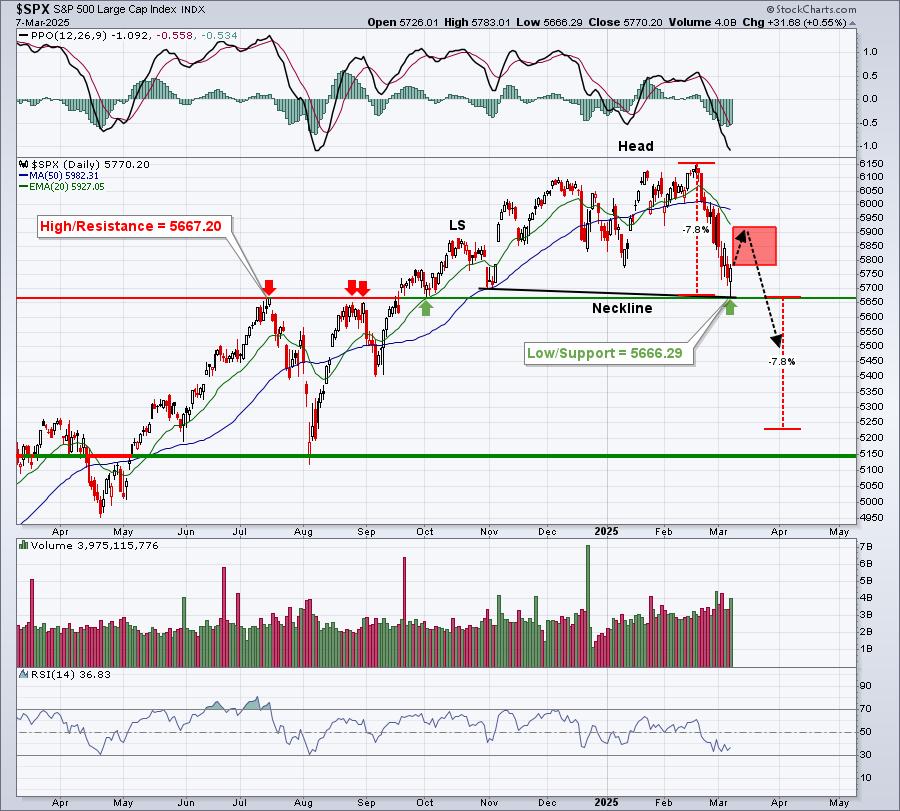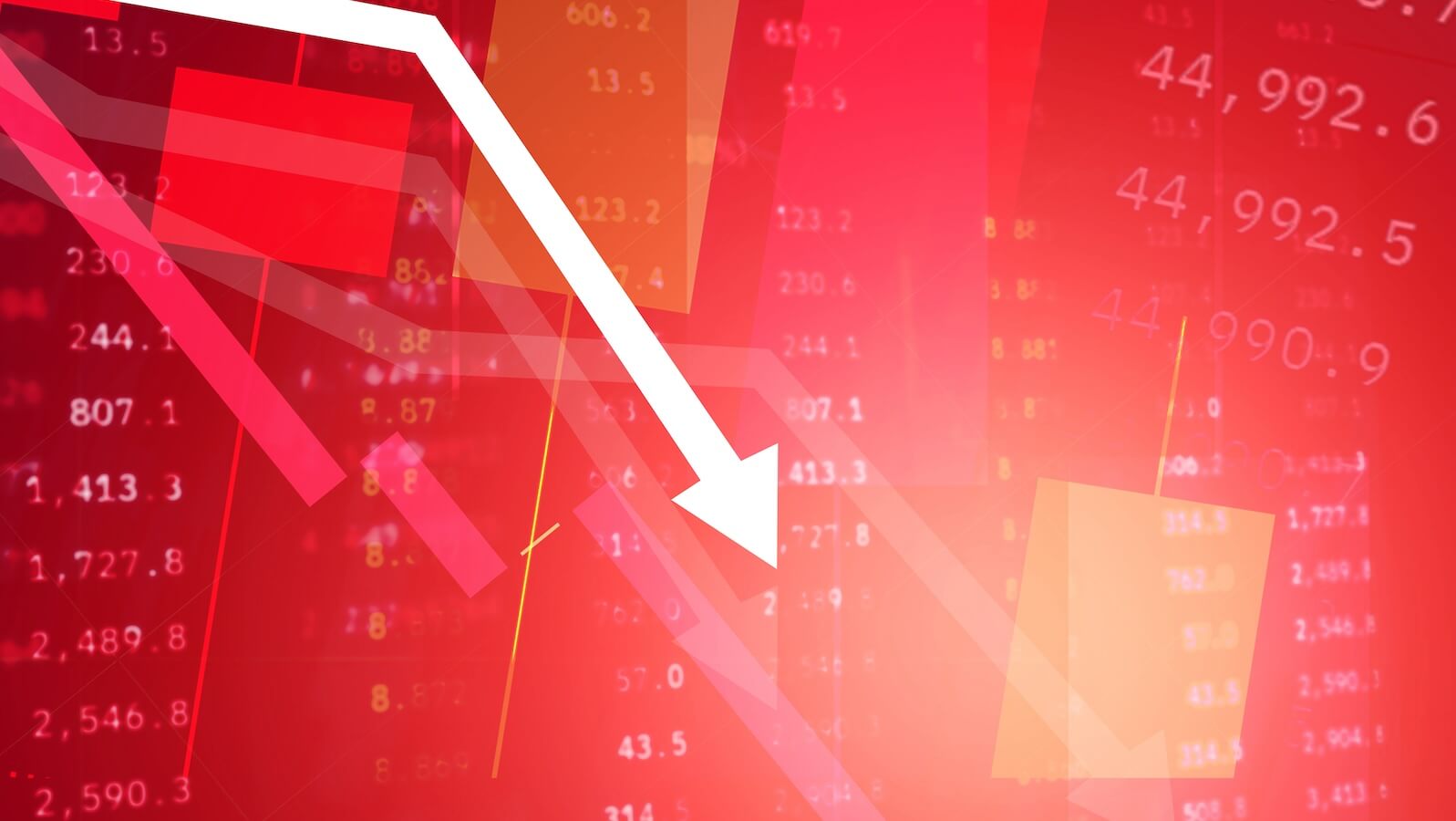TAKEAWAYS
- The S&P 500 index closed lower for the week and below its 200-day moving average
- Long-dated Treasury yields continue to move higher as investors digest the higher-for-longer narrative
- VIX has been trending higher which indicates a rise in investor uncertainty

Stock market action in the last few months reflects how quickly investor sentiment can change. Federal Reserve Chairman Powell's comments on Thursday implied that inflation is still high and the US economy continues to be strong. Although there's a high probability that interest rates will remain unchanged in the November meeting, it's unclear what the agenda will be for the December meeting. Powell's remarks didn't help the broader equity markets, which closed lower for the week on Friday.
The daily chart of the S&P 500 below shows that market breadth is also weakening in addition to the index battling with its 200-day simple moving average support.
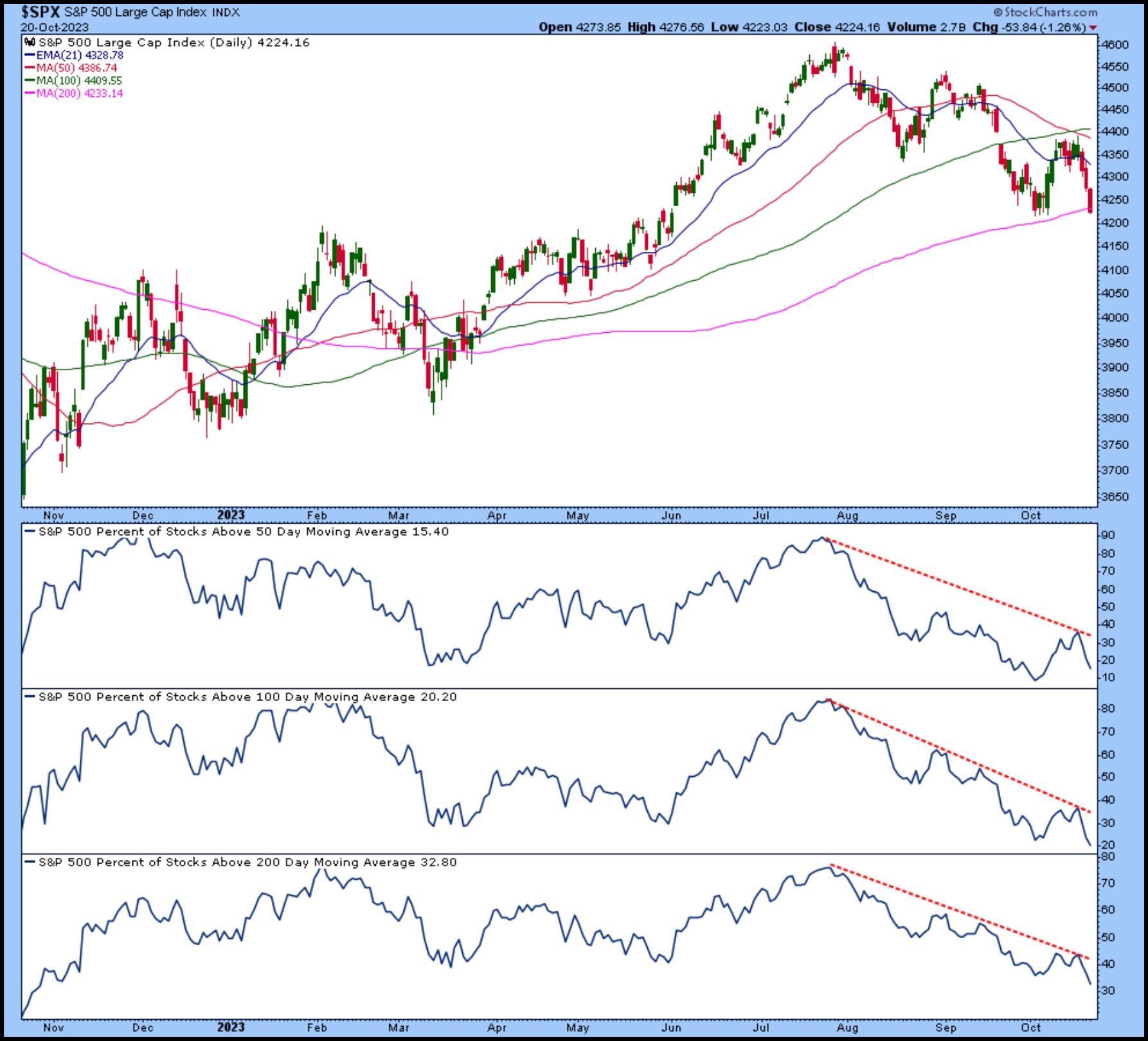
CHART 1: S&P 500 TRENDING LOWER. The index closed below its 200-day moving average, and the percentage of stocks trading below their 50-, 100-, and 200-day moving averages are also trending lower. Chart source: StockCharts.com. For educational purposes.
The percentage of S&P 500 stocks trading above their 50-, 100-, and 200-day moving averages are declining.
Bond Yields Rise
The higher-for-longer interest rate narrative helped long-dated bond yields. The 30-year US Treasury yield is around 5.1%, and the 10-year US Treasury is close to 5%. The higher yields are having an impact on the banking sector. The daily chart of the SPDR S&P Regional Banking ETF (KRE) shows the ETF is getting close to its May levels, when the US regional banking crisis occurred. Big banks are feeling the pain as well. The SPDR S&P Bank ETF (KBE) also displays a similar price action as KRE.
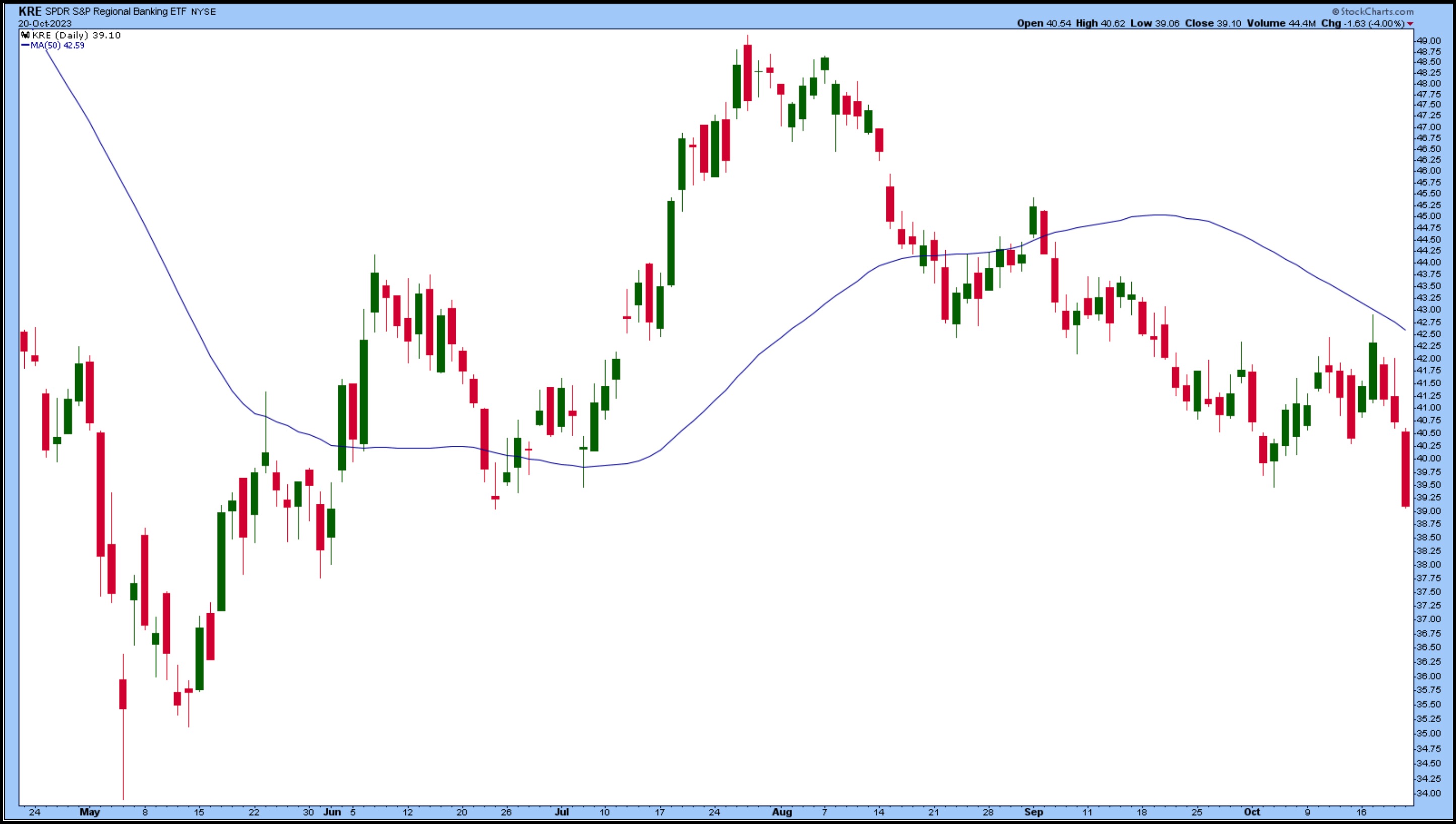
CHART 2: REGIONAL BANKS FALL AS YIELDS RISE. Regional banks, as well as the big banks, have been feeling the pain of higher interest rates. Price levels are close to where they were in May when the regional bank fiasco occurred. Chart source: StockCharts.com. For educational purposes.
Bond spreads are showing some significant action. The 10-year/2-year bond spread (see chart below) is rising steeply and is at -0.16. The same can be said about the 10-year-3-month spread. The 30-year/3-year and 30-year/5-year spreads are also trending higher. The steepening yield curves support Chairman Powell's statements about the strong economy and high inflation. And this increases investor uncertainty.
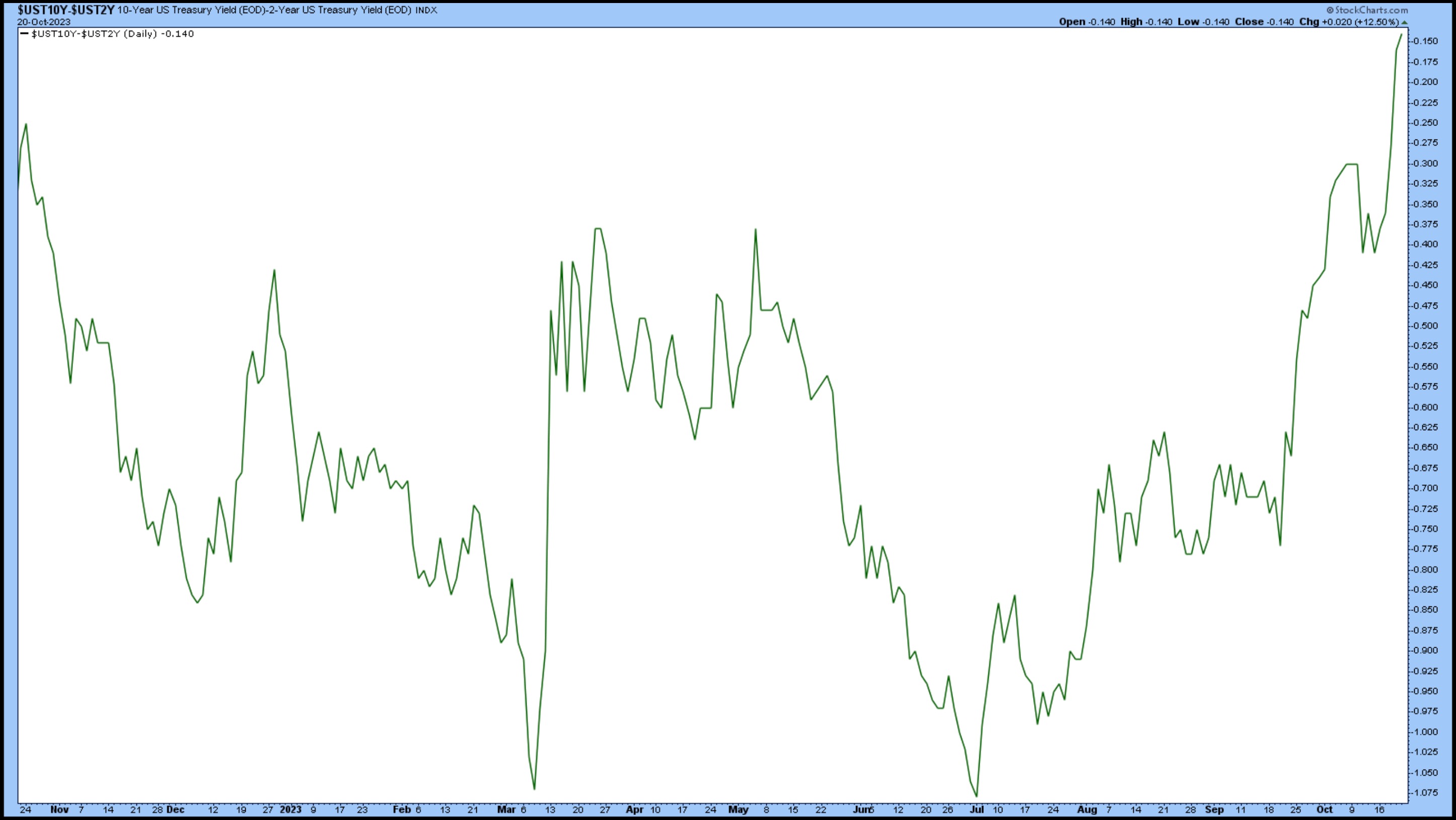
CHART 2: 10-YEAR/2-YEAR US TREASURY SPREAD. Long-dated bonds are up, which steepens the spread between the 10- and 2-year Treasury yields. Chart source: StockCharts.com. For educational purposes.
Interestingly, while interest rates are rising, gold prices have been rising, which is unusual. This indicates that investors are jittery about global events and are leaning toward risk-off sentiment.
Check out the Dynamic Yield Curve on the StockCharts charting platform.
Turning to Volatility
You'd think the present uncertainties would send volatility through the roof. Yet, the Cboe Volatility Index ($VIX), considered to be a fear gauge, hasn't shown signs of outlandish panic. The VIX tends to move inversely to the S&P 500. When the S&P 500 falls, VIX rises, and when fear is extreme, the VIX spikes. Although the VIX hasn't been showing outlandish levels of fear, it has been trending higher since mid-September, which needs to be watched closely.
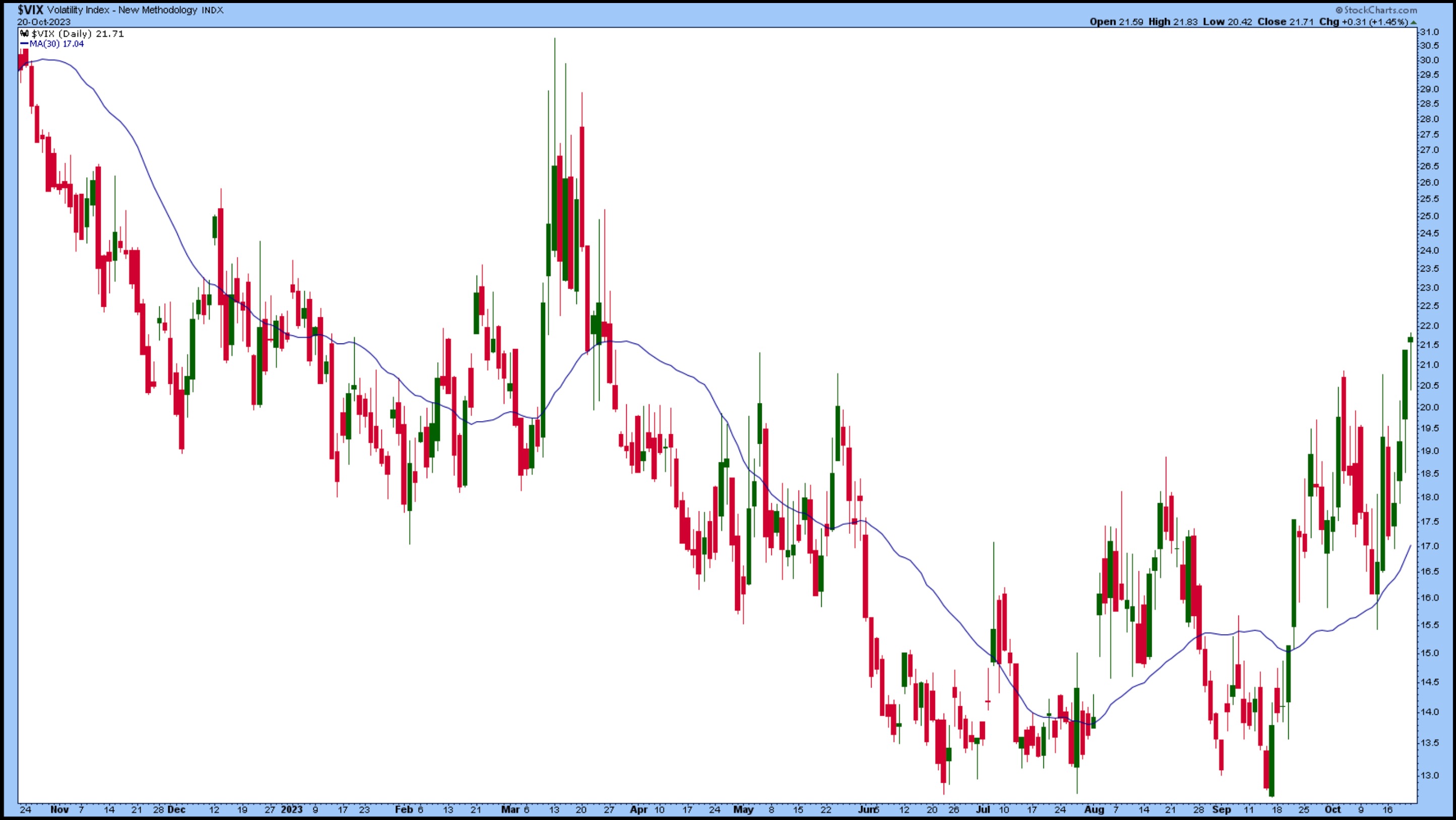
CHART 3: CBOE VOLATILITY INDEX (VIX) WITH 30-DAY MOVING AVERAGE OVERLAY. Although the VIX isn't at "panic levels" it's rising and has moved above the complacent 20 level. Keep an eye on this. Chart source: StockCharts.com. For educational purposes.
We are in the midst of escalated geopolitical tensions, interest rates are rising, a speakerless House of Representative, and so on. And while uncertainty rises, we have a big earnings week coming up with some of the big tech stocks reporting.
There's a lot to look forward to next week. Fasten your seatbelts. It could be a turbulent ride.
End-of-Week Wrap-Up
US equity indexes down; volatility up

- $SPX down 1.26% at 4224.16, $INDU down 0.86% at 33,127.28; $COMPQ down 1.53% at 12983.81
- $VIX up 1.45% at 21.71
- Best performing sector for the week: Energy
- Worst performing sector for the week: Real Estate
- Top 5 Large Cap SCTR stocks: Veritiv Holdings, LLC (VRT); Super Micro Computer (SMCI); Applovin Corp. (APP); Palantir Technologies, Inc. (PLTR); Nu Holdings, Ltd. (NU)
On the Radar Next Week
- Earnings from Alphabet, Inc. (GOOGL), Microsoft Corp. (MSFT), Snap, Inc. (SNAP), Boeing Co. (BA), Meta Platforms (META), Chevron Corp. (CVX) and many more.
- September New Home Sales
- Q3 GDP
- September PCE
Disclaimer: This blog is for educational purposes only and should not be construed as financial advice. The ideas and strategies should never be used without first assessing your own personal and financial situation, or without consulting a financial professional.
Happy charting!

